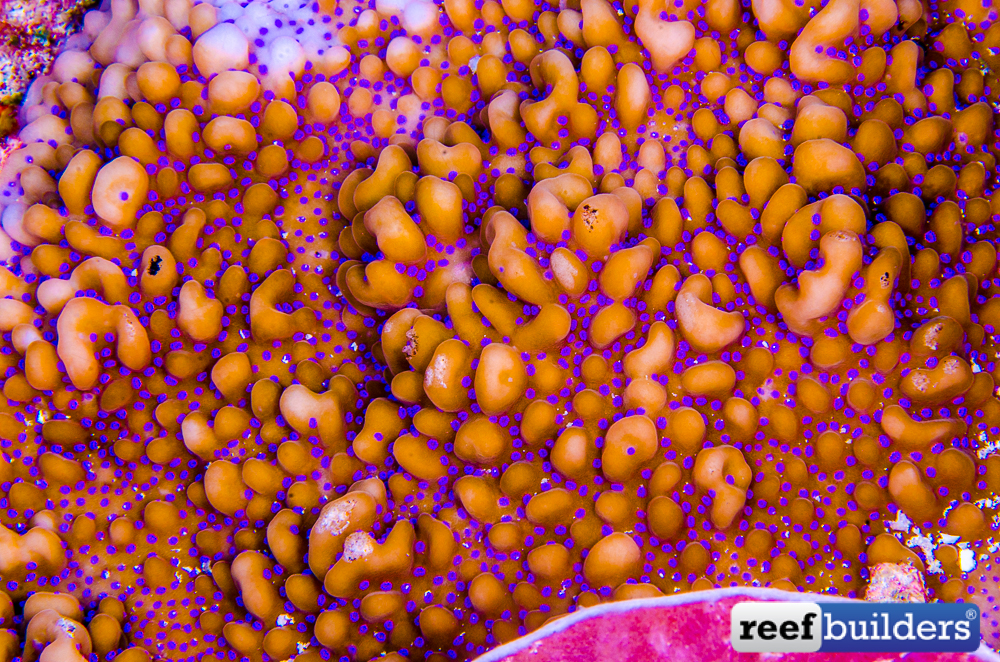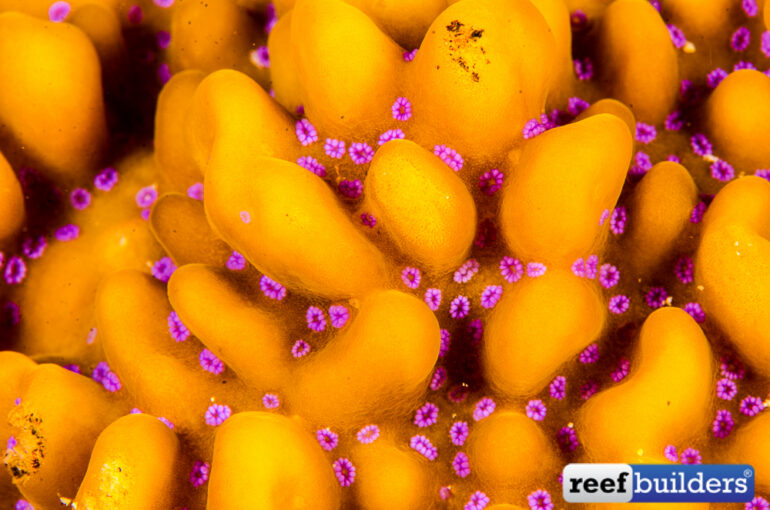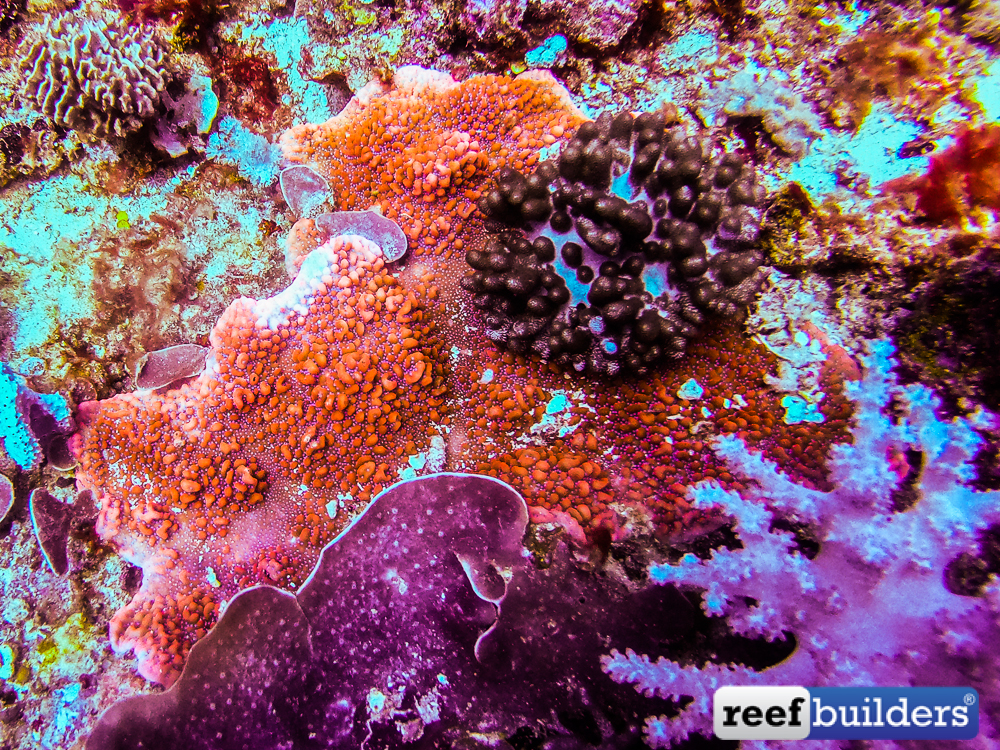Diving along the Great Barrier Reef, under the guidance from master coral collector, Nic Dos Santos from Ultra Coral Australia, we had the opportunity to see a lot of very nice corals. On one of these dive, at an offshore reef that was a very long way from the shore as soon as we hit the water, we had no time to settle.
No time to just measure the immensity and the richness of this reef, that we could hear the call, from a hammer on a chisel in the open water. The sound was coming from the deeper part, and soon we could see Nic, asking us to follow him in the deeper part. After a good long and extenuating swim, almost out of breath, here it was, our precious, the ‘Beach Bum Montipora’.
Not a shallow water Montipora:
On the gentle slope, just below this amazing table acros covered offshore reef, below 22 m (65 ft), this coral was glowing in the darker waters. It was really standing out of the coral mass and we could spot it from a distance. This explaining how Nic managed to see it, that far away from the boat in such a short time.
Its unique reef scanning method, is in full use, when it comes to clearwater offshore reef. A quick run in the deep, allows him to spot and collect the special deep water items, before working his way up collecting Strawberry Shortcake Acropora microclados and other A. anthocercis in the shallows.
Not really a calm water Montipora neither:
It was surrounded by soft corals, low growing and dense hard coral such as Turbinaria mesenterina. It was competing with algae. All these were signs of heavy flow and swell. And these offshore clear water reefs, get pounded by ocean swell, and blasted by tide flows. Which greatly reduce the chance of diving these places. It can only be reach when conditions are perfect, no wind, no swell, and neap tides. It’s another reason why this coral is so precious, it lives in places which are hard to collect.
Aquarium conditions:

This Montipora palawanensis, obviously doesn’t need much light, although it probably adapts well to higher light exposure. Its thick, dense, laminar, encrusting skeleton is a good sign of high flow environment. But we have seen this species, not as colorful though in Indonesia in much calmer and shallower area. But according to Nic, these peach with bright purple polyp coloration is only found in this kind of environment.
That’s why it often does well on the bottom of a tank, preferably sand free. It’s usually where the flow is high and light is mild. Montipora palawensis has the particularity of developing very large, irregular verrucae that fuse into ridges at the margin – A very unique feature among Montis that makes it really special.





